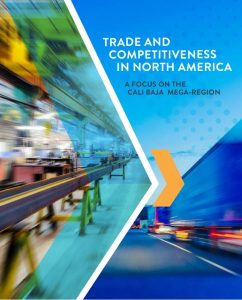Summary

The North American Free Trade Agreement (NAFTA) was enacted on January 1, 1994, and was the first reciprocal agreement of its kind between industrial and developing countries. Broadly, the agreement sought to lower trade barriers and increase trade and investment between the United States, Canada, and Mexico. This report uses available data to analyze and illuminate how NAFTA has heightened economic competitiveness across North America and spurred growth in Cali Baja’s innovation economy, making it one of the most beneficial and significant trade agreements in history.
This report was produced by World Trade Center San Diego, supported by the Center for U.S.-Mexican Studies at UC San Diego School of Global Policy & Strategy and El Colegio de la Frontera Norte.